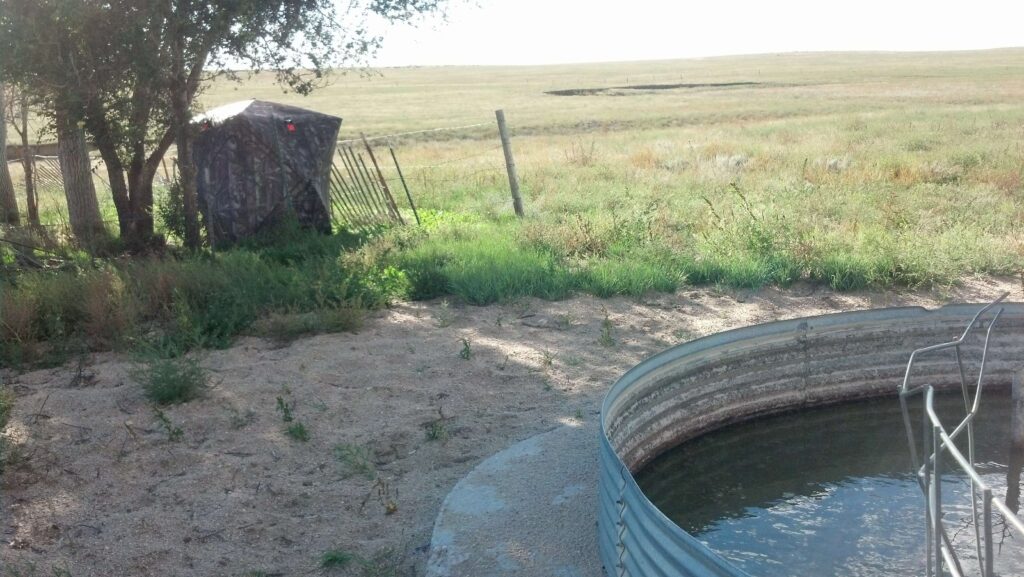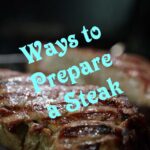Putting together a solid hunting plan to hunt pronghorn antelope has a lot of similarities to putting together a solid marketing plan for your product or service.
As any regular reader of my blog or someone who knows me personally would know, I’m obsessed with archery hunting for pronghorn antelope. As anyone who is familiar with pronghorns knows, they are very elusive and anxious creatures that are not easily caught off guard. Sitting in a ground blind for over 13 hours a day affords me the luxury of time to reflect on my own marketing strategies employed during this past year within the context of hunting, which has allowed me the clarity to see marketing from a fresh perspective.
When it comes to hunting pronghorns in open country, the only effective way to succeed is to employ an ambush type strategy. You set up your blind in a place where the game is likely to go to every day. Since pronghorns need to drink water every day, a watering hole is a natural place to set up your blind. While I sit relatively motionless in my chair tucked inside my blind overlooking either the beach of a small pond or next to a stock tank with nothing but featureless pasture to look at, thoughts comparing this hunting strategy to marketing strategies often permeate my thoughts.
During a hunt last season, I thought about my website and my blog, which I designed to attract my potential customers. In the past, I have paid the likes of Google and Facebook to make sure that I appeared in various search strings or feeds, but alas very few clicks ended in sales. As a result, this approach had very high customer acquisition costs.
As I sat there comparing hunting to marketing, it dawned on me that there might be a better way. Rather than focusing all my attention on building a site to attract prospective customers, I might be better served going to the places and participating in things that my prospective customers engage in every day.
Rather than building it and hoping they will come, I should spend more time commenting on blogs and forums where my customers regularly congregate.
“A net is a great way to catch fish, but a net in the middle of the ocean will catch few fish – you have to go to where the fish go every day to feed to catch your limit.”
Today, I actively contribute to discussions on subreddits that deal with entrepreneurship-related topics and even recently start my own Q&A tab on my site to engage with my audience more.
I could have brought my own stock tank and water and placed it in the middle of a field and then set up blind nearby to await my quarry. This strategy, which is similar to building a web page and waiting, might work. However, it is more likely that it will take months or even years for pronghorns to locate the tank and make it part of their daily routine to visit.
The next hunting/marketing revelation I came to is based on what Malcolm Gladwell in his book, “The Tipping Point,” and the Heath brothers in their book “Made to Stick, Why Some Idea Survive and Others Die,” referred to as the “stickiness” of your value proposition. Pronghorns have many options to graze, seek water, or to find a suitor to mate with, but they don’t follow human logic, they follow pronghorn logic.
For example, I was sure that since the pronghorns were grazing north of my blind’s location one day that they would travel in a straight-line south to my watering hole where I could get a shot. They surprised me more than once when they just appeared to my west, leaving me with a less than ideal shooting angle and resulting in missed opportunities. For some reason, this less than direct route made sense to them.
When it comes to framing a value proposition or tagline, it is not important that is makes sense from your perspective; it only matters if the message resonates with the potential customer from their unique perspective. Your message needs to use the vernacular of the customer and be creative enough to be memorable to the prospect.
Wendy’s “Where’s the Beef” campaign was a clever way to say you get more meat in your burger when you go to Wendy’s. It was simple, catchy, memorable, and relevant to an audience looking for a better hamburger. In a word, it was “sticky.” Incidentally, it was Wendy’s most successful campaign.
As a result of understanding stickiness, one of my businesses that targets oil and gas exploration companies changed its tagline. My new message was changed to help them see how my product will help them: “Frac” their sales process to unlock their investors “reserves.” Both concepts are easy for my customers to relate to and whose meaning represents a double entendre that makes them want to say “tell me more.”
So, hunting pronghorns with a bow and arrow and marketing are not so different. You can’t expect to simply build it and hope they will come – you have to go to where the early adopters of your product or service spend time every day and provide them with a sticky value proposition that they can relate to and captures their imagination to the point where it leaves them wanting to know more.
Do you prospect for customers where they live and do you have a sticky message that makes them want to follow you back to your business?












